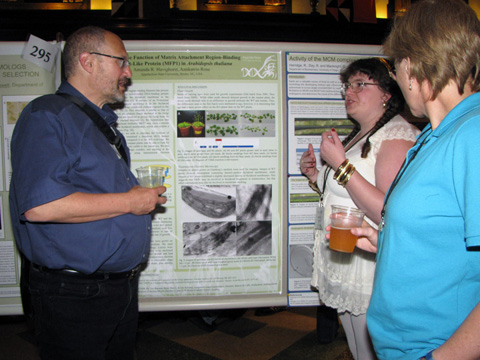 |
Dr. Annkatrin RosePlant Molecular Biologist |
||
|
COURSES |
Assessing the Function of Matrix Attachment Region-Binding Filament-Like Protein (MFP1) in Arabidopsis thalianaAmanda Havighorst, Annkatrin Rose Matrix attachment region-binding filament-like protein 1 (MFP1) is a long coiled-coiled DNA-binding protein which is found in the thylakoid membrane in the chloroplasts of plants. It consists of an N-terminal transmembrane domain anchoring it in the thylakoid membrane with a long coiled-coil domain exposed to the stroma. This structure is similar to that of golgins, which are proteins found anchored in the Golgi membranes that are involved in giving the Golgi body its characteristic stacked structure. We hypothesize that due to its structural similarity MFP1 may serve a similar purpose in the thylakoid membranes, which also exhibit a stacked structure. A knockout mutant lacking MFP1 displays no obvious phenotype visible to the naked eye. However, preliminary comparison of cells from wild-type and mutant seedlings using transmission electron microscopy indicates a slightly decreased chloroplast size with decreased density of thylakoid membranes within the chloroplasts of plants lacking MFP1. Since a change in thylakoid structure could compromise the plant's ability to photosynthesize, further experiments will be done to compare photosynthetic efficiency in the knockout mutant versus the wild-type plants. Poster # 296 at the 22nd International Conference on Arabidopsis Research, Madison, WI, June 22-25, 2011.
|
||
